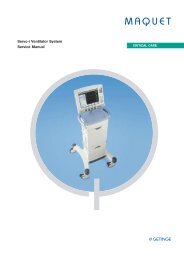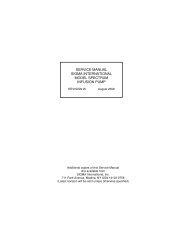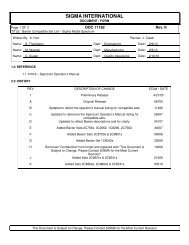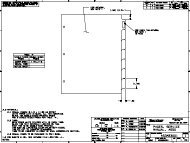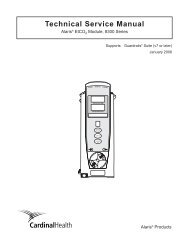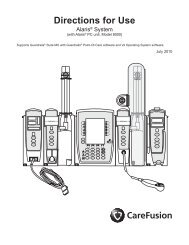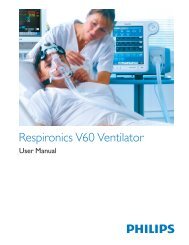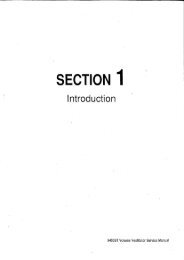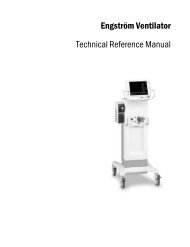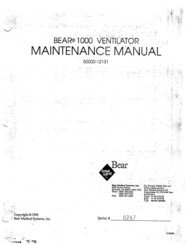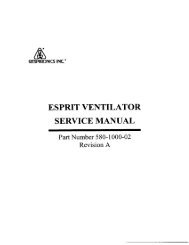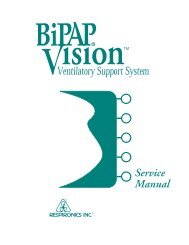Operator's Manual-AVEA - Static Content
Operator's Manual-AVEA - Static Content
Operator's Manual-AVEA - Static Content
Create successful ePaper yourself
Turn your PDF publications into a flip-book with our unique Google optimized e-Paper software.
Service <strong>Manual</strong> 37<br />
Chapter 4 Calibration<br />
(for software releases 2 and 3 only)<br />
Introduction<br />
The information in this section is intended for use by a factory trained service<br />
technician. Before opening the console or removing assemblies to perform<br />
calibration, a reference should be made to the Instruction <strong>Manual</strong> and Sections 1, 2,<br />
3, and 7 of this <strong>Manual</strong> to assure that the ventilator is being properly utilized.<br />
WARNINGS<br />
• The calibration procedures contained in this section must be completed when<br />
any part/assembly has been removed and/or replaced. Failure to do so could<br />
result in ventilator malfunction and injury or death to the patient.<br />
• After calibration and/or replacement of any assembly(ies), always perform the<br />
Operational Verification Procedure (Section 3), then allow a "BURN-IN" period<br />
and repeat the Operational Verification Procedure.<br />
• Oxygen vigorously accelerates combustion. DO NOT use any gauges, valves or<br />
other equipment that has been exposed to oil or grease contamination to avoid<br />
violent ignition.<br />
• Hazardous voltages exist within the ventilator. Always observe appropriate<br />
safety precautions when working on the ventilator while the machine is<br />
connected to an electrical power source to prevent possible accidental injurious<br />
electrical shock.<br />
• When high pressure gas sources are connected to the ventilator, always use<br />
extreme caution when attempting to measure internal pressures. Abnormal<br />
conditions may exist where measured pressures exceed the burst pressure of<br />
the gauge, resulting in possible injury.<br />
NOTE<br />
The Operational Verification Procedure (OVP) is always performed prior to use of<br />
this section.<br />
CAUTION<br />
• Before using any test equipment (electronic or pneumatic) for calibration<br />
purposes (other than operational verification), the accuracy of the instruments<br />
must be certified by a testing laboratory. The laboratory master test instruments<br />
must be traceable to the US Bureau of Standards or equivalent. When variances<br />
exist between the indicated and actual values, the calibration curves (proved by<br />
the testing laboratory) must be used to establish the actual correct values. This<br />
certification procedure should be performed at least once every six months. More<br />
frequent certification may be required based on usage and environment.<br />
L2342 Revision B November 2004




